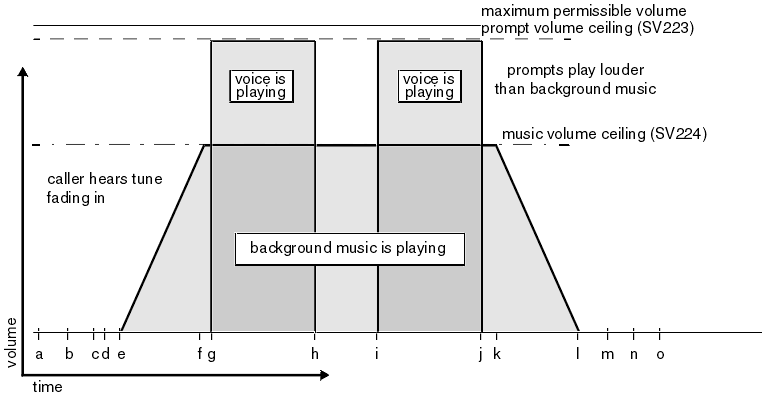The prompt volume ceiling and the music volume ceiling system variables are defined so that the maximum permissible volume on your telephone system is not exceeded when a voice sample is played at both volumes and both voice streams are mixed together. When one volume is high, the other must be low, as shown in Table 1
| Music Volume Ceiling | Prompt Volume Ceiling | Prompt Volume Ceiling | Music Volume Ceiling | |
|---|---|---|---|---|
| 0 | 10 or higher | 0 | 10 or higher | |
| 1 | 5 or higher | 1 | 5 or higher | |
| 2 | 3 or higher | 2 | 3 or higher | |
| 3 | 3 or higher | 3 | 3 or higher | |
| 4 | 2 or higher | 4 | 2 or higher | |
| 5 | 2 or higher | 5 | 2 or higher | |
| 6 | 1 or higher | 6 | 1 or higher | |
| 7 | 1 or higher | 7 | 1 or higher | |
| 8 or higher | 0 | 8 or higher | 0 |
Figure 1 shows a diagrammatic version of events in the Musical_Welcome state table; shaded areas indicate when prompts or background music is playing.
Figure 1. Musical welcome state table: volume levels


Figure 2 shows how you would set the prompt volume ceiling and the music volume ceiling to the same level to play both prompts and tunes at the same volume.
Figure 2. Playing prompts and tunes at the same volume

